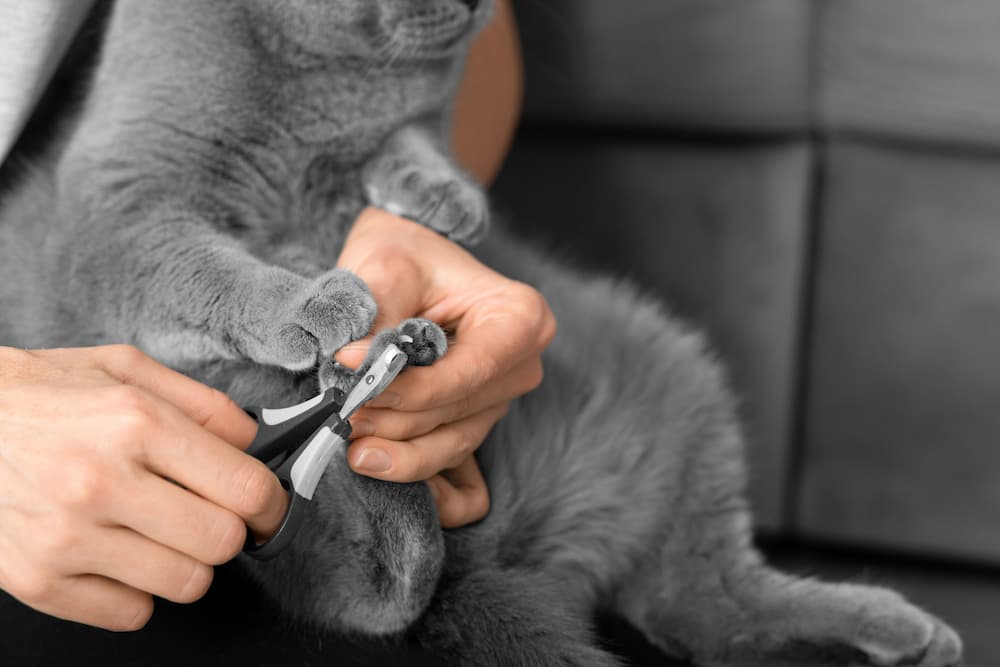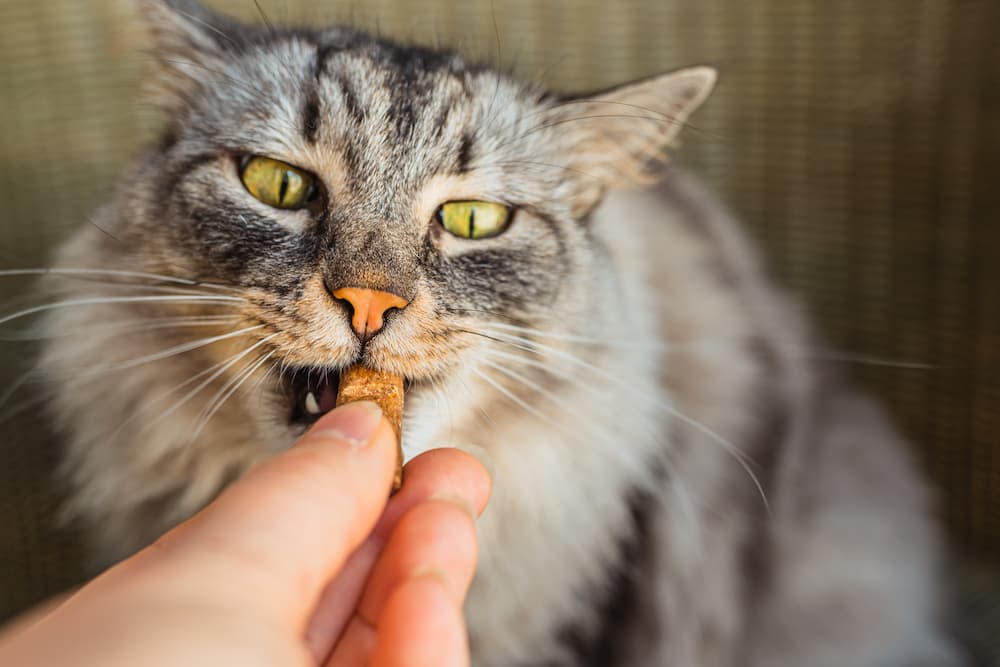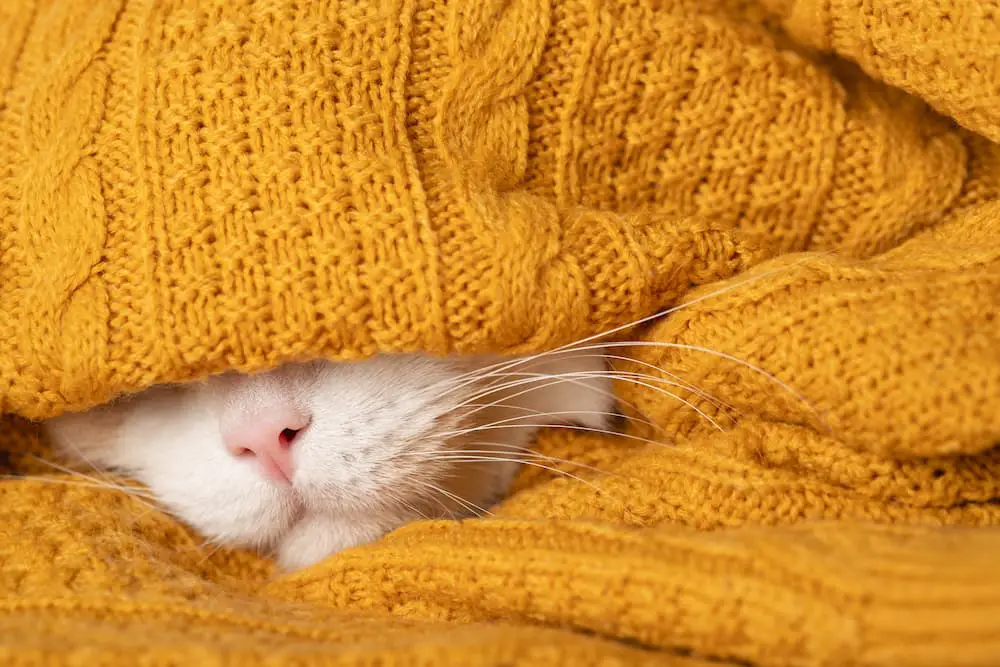For cat parents navigating nail trims with their feline friends, it can often feel like an arena where the smallest opponents possess the most formidable weapons – their razor-sharp claws. That’s why we’ve created this guide — it’s a roadmap to transforming what is often a battleground of hisses and harried creatures into a soothing spa-like ritual. Embracing the nail trimming process is essential not only for maintaining your cat’s health but also for deepening the bond between pet and owner. So here are some tips for training your cat to accept nail trimming at home.

Understanding Your Cat’s Behavior
Cats, as natural self-groomers, may find human-intervened routines weird or intimidating. Understanding your cat’s rationale for resistance often boils down to primal behaviors – aversions to constraint or the potential fear of the unknown. Patience and positive reinforcement are your best allies to navigate through these instincts.
When it comes to nail trimming, many cat owners stumble upon a common set of challenges. The feline sense of touch is exceedingly delicate — their paws, especially, are highly sensitive. This can make the sensation of nail clipping quite uncomfortable or even stressful for cats.
Additionally, the sound of clippers can be jarring to a cat’s acute hearing. Struggling and agitation during nail trimming sessions are other frequent issues, often leading to a stressful experience for both cat and owner. Coupled with the possibility of accidentally clipping too close to the quick and causing pain, it’s clear why cats might be apprehensive and owners hesitant. Addressing these challenges requires a gentle, step-by-step approach that acclimates your cat to the process slowly but surely.
Preparing for the Training Process
Before embarking on your grooming quest, outfit yourself with the right tools:
- Cat-specific Nail Clippers: Choose clippers designed specifically for cats to ensure they are the right size and shape to safely trim without splitting or crushing the nail.
- Styptic Powder or Pencil: Have this on hand to quickly stop bleeding in case you accidentally cut the quick of the nail.
- Treats: Keep your cat’s favorite treats nearby to reward them and create positive associations with grooming.
- Calming Spray or Feline Pheromones: These can help relax your cat and make the grooming process less stressful for them.
Gradual Desensitization
Imagine if someone picked you up out of the blue and started prodding at your toes with strange tools. It’d probably require a period of adjustment, right? Cats, too, benefit from a gradual introduction. Begin with gentle touches around the paws and body, rewarding calm behavior at each step.
Over multiple sessions, progressively extend your handling to include gently pressing on your cat’s paws to extend the claws, mimicking the action you’ll take when clipping. Introduce the clippers by placing them near your cat during these calm moments, allowing them to scent and inspect the tool without using it. With each successful interaction, reward your cat and slowly increase the duration and frequency of these exercises.
Only once your cat appears completely at ease with these preparatory steps should you attempt to clip a single nail – always followed by a treat. This process of desensitization can take time, often weeks or even months, but it’s vital for a stress-free grooming experience for the long term.

Introducing Nail Trimming
Nail trims are often dreaded by both parties, but they needn’t be. Our strategy is simple: get your cat familiar with the clippers through sight and touch before snipping with the precision of a jeweler. Learn the cat’s do’s and don’ts for cutting and how to approach sensitive paws without causing a spike in stress levels.
Once your cat is familiar with the clippers and exhibits a calm demeanor, you can commence the actual trimming. Position yourself and your cat comfortably — on your lap, a favorite resting spot, or a stable surface. Speak softly to maintain a relaxed atmosphere. Hold your cat’s paw gently but firmly, and press the pad to extend a single claw. Carefully observe where the transparent part of the nail ends and the pink ‘quick’, which contains blood vessels, begins.
Avoid the quick to prevent pain and bleeding — cut only the sharp, translucent tip of the nail. If you’re unsure, it’s better to err on the side of caution and trim less than more. After each successful snip, reward your cat with a treat and soothing praise. If at any time your cat protests or becomes restless, give them a break and try again later. Gradual acclimation is key, and over time, nail trimming will become a routine part of your cat’s grooming habits that they can approach with trust rather than trepidation.
Using Positive Reinforcement
Treats are the magic to transforming a potentially negative experience into a positive one. Use high-reward treats specifically reserved for grooming sessions and dole them out liberally. Gradually increase the time between each treat to reinforce good behavior and patience.

Beyond the use of treats, shower your feline friend with generous praise and petting after every successful nail trim. Consistent positive reinforcement helps your cat associate nail trimming with pleasant rewards. This strategy isn’t limited to food but can also include their favorite activities, such as a play session with their preferred toy or cuddles at a cherished spot. This method creates a powerful incentive for cats, who are creatures of habit, to tolerate, if not eventually enjoy, the nail trimming process. Remember, the key to positive reinforcement is timing. Immediate rewards or affirmations right after the nail trim make the connection between the action and reward as clear as possible.
If your cat becomes anxious or agitated, take a break, and try again when they are calm. Avoid punishing or scolding your cat during nail trimming; this will only make them associate the experience with negative feelings. Instead, focus on creating a calm and positive atmosphere, building trust with your furry friend.
Dealing with Challenges and Concerns
Even with masterful training, there can be those rare cats who seem destined to avoid the grooming graces. If the challenges prove too much, seek the counsel of a veterinarian or professional groomer for cats with extreme grooming needs or behavioral issues.
Conclusion
A well-groomed cat is a happy cat, and with the right tools, patience, and positive reinforcement, you can make nail trimming an essential part of your feline’s grooming routine. The key is to approach the process gradually, desensitizing your cat to each step before attempting a full trim. And remember, every cat has their unique preferences and needs, so be flexible and adapt to find the best strategy that works for you both. With consistency and kindness, nail trimming can become a bonding experience between you and your beloved cat.
The Catington Post is reader-supported. That means, if you make a purchase through links on our site, we may earn an affiliate commission. All images and names which are not the property of The Catington Post are the property of their respective owners.








